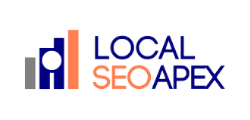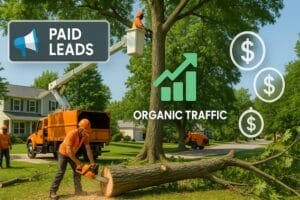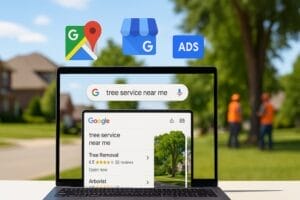Are you fully utilizing your local SEO strategy to get more business flowing your way? Are your products and services visible in your community? Or are you losing business because of poor online visibility? If your answer was no to any of these questions, then you need an actionable local SEO cheat sheet?
If you are having difficulty getting your local business visible in search engine result pages (SERPs), you cannot fully utilize all the local SEO tools available. Lucky for you, this post discusses a local SEO Cheat sheet and best practices to follow to garner more business in your community.

What is Local SEO?
Local SEO refers to increasing your business’ search visibility within your community. It is necessary for:
- Brick and mortar businesses such as a dentist’s office, auto repair garage, grocery store, or a B&B (bread and breakfast)
- Service-area businesses operating throughout a particular geographic area like a house cleaning company, roofing contractor, or an electrician
Local SEO includes everything from claiming your business listing to ensuring your franchise location appears in local search on search engines like Google.
A Local SEO company includes managing online reviews and ratings, local-centric social media engagement, and optimizing metadata and directories.
Use the following local SEO cheat sheet to get more local business for your company.
1. Make Your Website Mobile Responsive
Almost 70% of all Google traffic comes from mobile devices. Therefore, you need to keep both desktop and mobile in mind while designing your website.
Always have your business optimized for mobile if you don’t know how you should use a local SEO company to help with your marketing efforts. According to a recent Statists report, over 63% of google searches are done on mobile devices, while Search Engine Watch says 70% of that traffic calls businesses directly from search results.
Keeping your website interactive using features like click-to-call buttons, fill-out forms, and functional links is also advisable. These will help you increase your local SEO by keeping target audiences engaged and interested while on your website.
While you are at it, give your customers and target audiences relevant content and answers to what they are searching for – and make it quick and easy.
As you optimize your website for SEO, page speed, and mobile, remember to put yourself in your target audiences’ shoes.

2. Create an Intentional Keyword Strategy
Keyword strategy refers to your research when creating an extensive keyword list you want to rank for on search engines. It should consider what target audiences want and are searching for and cater to long-tail keywords as well.
You can use several options to find keyword content for SEO, such as Keywords Everywhere, Ubersuggest, KWFinder, and Semrush.
3. Optimize Your B2B Site for Quick Search Engine Indexing
Search engines like Google can produce millions of results for most queries and search terms users enter. However, to do that, they have to index the pages to provide relevant results.
If you have not correctly indexed your website’s pages, they will not show up in SERPs at all. Hence, you need to index your B2B web pages and optimize them to rank high on SERPs. Search engines like Google and Bing gauge content according to an algorithm that establishes a set of rules guiding the search engine’s ranking function.
Do the following to optimize your website’s indexing in Google:
- Check whether the search engine has indexed your URL
- Create and submit sitemaps that help the search engine do its job effectively
- Where necessary, create and optimize your robots.txt file
- Know when to utilize a 301 redirect
- Check for broken links
- Eliminate flash
4. Improve Your Page Load Time
Users find it incredibly frustrating and annoying when a website page takes forever to load on a desktop or mobile. Often, it will cause the user to leave the page altogether. Search engines like Google care a lot about online user experience, so page speed matters on your site. Google wants to avoid causing user frustration at any cost.
Given the high level of traffic coming from mobile devices, it is essential to keep mobile in mind when you design and later optimize your website.
The ideal loading speed for your website should be around one to three and a half seconds. Some tools to use to figure out your webpage loads are Pingdom and Google page speed insights. You can also reach out to a website developer if you have any trouble.
5. Build Trusted and Relevant Backlinks
Backlinks are also known as inbound links. They are a trustworthy and authoritative link-building strategy using content and online relationships. Backlinks are valuable for local SEO because they represent authority and a “vote of confidence” between reliable sites.
Therefore, by having multiple backlinks from sites people trust, search engines will infer that your content is credible and rank your site higher in SERPs.
However, it is critical to avoid spammy backlinking using black hat SEO methods since they have detrimental effects on your website. Do all your backlinking strategies with a purpose in mind.
Below are some strategies to garner more backlinks:
- Guest blogging for a larger site
- Get listed directories
- Ask authoritative bloggers to consider reviewing your products or site
- Try answering questions on community platforms like Quora
- Offer your content as a resource
6. Use Social Media for Local Business
No local SEO checklist is complete without social media for business. The right social media strategy can set your business apart from other local listings in your area. However, you will need a targeted social strategy to get effective results, have the right audiences view your content, and increase traffic to your website and physical locations.
Avoid wasting money and effort by identifying and targeting the right social platforms for your clientele. Below are the best social media platforms for local businesses:
- Google My Business: GMB allows you to give information about your business (operation and reviews) and helps you appear on Google Maps as a business profile on both mobile and desktop
- Facebook for Local Business: A Facebook local business page allows you to access features such as reviews, special offers, analytics, instant messaging, and automated replies
- LinkedIn for Local Businesses: LinkedIn can help establish you as an industry thought leader and allow you to generate leads
- Instagram for Local Businesses: Instagram allows you to build relationships and showcase the humanity behind your brand
- Pinterest for Local Businesses: Pinterest boasts 454 million monthly users, over five billion monthly searches, and a 48% shopping intent
To maximize your ROI:
- Consider and use the most popular social media sites for your target audience and demography. For example, according to Statista, you are more likely to find baby boomers on Facebook (78%) than on TikTok (2%)
- Remember that your priority on any social media platform is to help others and not to sell to them. Identify opportunities to be helpful, such as answering questions, offering resources, or brightening someone’s day
- Know that social media could be a hit and miss experience until you find the right niche for you
- Always keep your social accounts updated and active
Take Advantage of Our Local SEO Cheat Sheet
Using this local SEO cheat sheet by Local SEO Apex will start you off on the path to increasing your site ranking with search engines and gaining more significant traffic and conversions.
The good thing about local SEO is that you don’t need to compete against the whole world. You only need to be a consistent and reliable resource for your community. So be in the right online places at the right times and pair it with excellent service or quality products.




